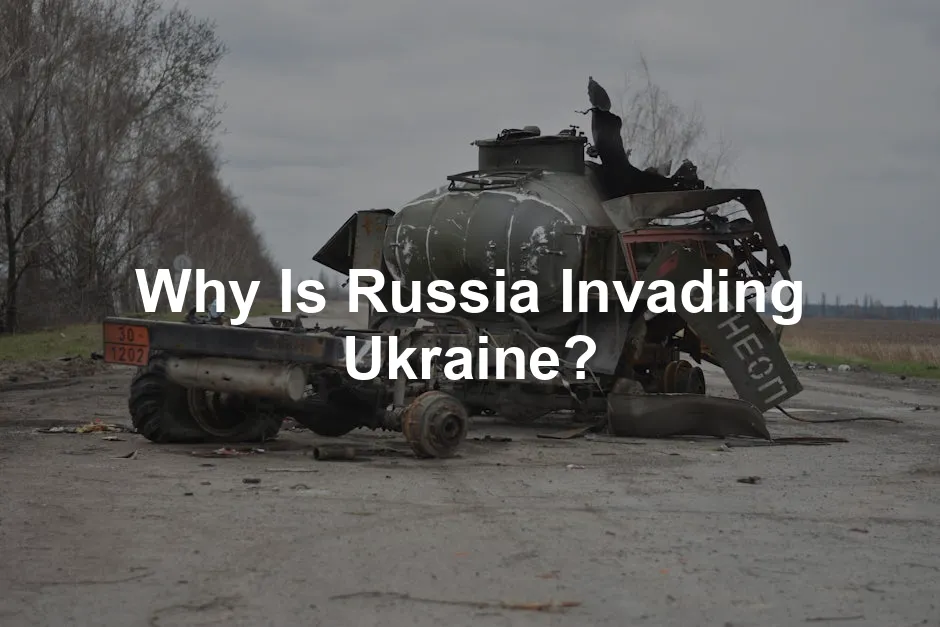
Why Is Russia Invading Ukraine?
The ongoing conflict in Ukraine has severely impacted its economy and infrastructure. Many industries have faced destruction, especially in key regions like Donbas and Mariupol. The war has disrupted supply chains and led to a significant decrease in GDP. The agricultural sector, vital for both Ukraine and global food security, has been especially hard-hit. Farmers struggle to plant and harvest crops amidst the fighting, leading to food shortages.
On a broader scale, Europe now grapples with rising energy prices and inflation due to sanctions on Russia and disruptions in gas supplies. Countries dependent on Russian energy sources face tough choices, prompting them to seek alternative supplies. The war has also led to increased military spending across Europe, which could affect public services and economic growth.
To stay informed about geopolitical developments, consider subscribing to Military History Magazine. It offers insights into historical conflicts that shape our present.

Conclusion
The invasion of Ukraine has reshaped the geopolitical landscape and caused immense suffering. Key points include the historical grievances and security concerns that fueled Russia’s actions. The long-term implications of this conflict affect both Ukraine and Russia, intensifying regional tensions and humanitarian crises.
Diplomatic solutions are essential to foster peace and stability. The international community must prioritize dialogue and negotiation to mitigate the ongoing violence and address the dire humanitarian needs of the affected populations.
FAQs
What are the main reasons for Russia’s invasion of Ukraine?
Russia’s invasion stems from historical grievances, security concerns, and geopolitical aspirations. Putin views Ukraine as part of Russia’s sphere and fears NATO’s expansion. Additionally, he aims to reassert influence over former Soviet territories.
How has the international community reacted to the invasion?
The global response has included widespread condemnation, sanctions against Russia, and military support for Ukraine. Countries like the U.S. and EU have provided significant financial aid and weaponry to bolster Ukraine’s defenses.
What has been the impact of the invasion on civilians?
The conflict has led to a severe humanitarian crisis, with thousands of casualties and millions displaced. Many civilians face dire living conditions, lack access to basic necessities, and endure ongoing violence.
Are there any ongoing peace negotiations?
Efforts for peace negotiations have faced challenges, with both sides holding firm on key issues. While dialogue continues, significant breakthroughs remain elusive, prolonging the conflict.
What does the future hold for Ukraine and Russia?
Potential scenarios include continued military engagements or a shift towards negotiations. The future will depend on international dynamics, domestic pressures in Russia, and Ukraine’s resilience in face of ongoing threats.
Please let us know what you think about our content by leaving a comment down below!
Thank you for reading till here 🙂
To understand the complexities of the ongoing conflict, it’s important to consider why the international community discourages Ukraine from military action against Russia.
As you reflect on these events, consider equipping yourself for any situation with a Tactical Military Pen. It’s not just a writing tool; it can also serve as a self-defense weapon if needed!
Lastly, for those who enjoy a good read about resilience in the face of conflict, check out “The Road to Unfreedom: Russia, Europe, America” by Timothy Snyder. This book provides a thought-provoking perspective on the geopolitical tensions surrounding the conflict.
All images from Pexels
The international community reacted quickly to Russia’s invasion of Ukraine. Many countries condemned the aggression, calling it a blatant violation of international law. The United Nations held emergency sessions, urging Russia to withdraw its troops. Sanctions were swiftly imposed on Russia, targeting its economy, financial systems, and key individuals. The U.S. and European Union led these efforts, restricting access to global markets and freezing assets.
In addition to sanctions, military aid poured into Ukraine. Countries like the U.S., the UK, and Canada provided weapons, training, and intelligence support. This assistance aimed to bolster Ukraine’s defenses and push back against Russian advances. Humanitarian aid also saw a surge, with nations rallying to support those displaced by the conflict. As a result, this unified response reflected a strong commitment to uphold international norms and support Ukraine in its struggle for sovereignty.

To understand the military strategies involved, consider reading “Putin’s War on Ukraine: The Unfolding Crisis” by Richard Sakwa. This book provides an in-depth analysis of the strategies and implications of the invasion.
The Role of NATO and the EU
NATO and the EU play crucial roles in the ongoing conflict. NATO’s response included activating defense plans and increasing troop presence in Eastern Europe. This move reassured member states, particularly those bordering Russia, of their security. NATO’s enlargement, which has seen countries like Finland and Sweden express interest in joining, has heightened tensions with Russia. Moscow views this as a significant threat to its sphere of influence.
The EU responded by implementing severe sanctions against Russia and coordinating military support for Ukraine. The bloc also aimed to reduce its energy dependence on Russian resources. This shift is vital for European energy security and aims to weaken Russia’s financial capacity to sustain the war. The actions of NATO and the EU highlight their commitment to collective defense and regional stability, showcasing the broader geopolitical implications of the conflict.

Economic Consequences
The ongoing conflict in Ukraine has severely impacted its economy and infrastructure. Many industries have faced destruction, especially in key regions like Donbas and Mariupol. The war has disrupted supply chains and led to a significant decrease in GDP. The agricultural sector, vital for both Ukraine and global food security, has been especially hard-hit. Farmers struggle to plant and harvest crops amidst the fighting, leading to food shortages.
On a broader scale, Europe now grapples with rising energy prices and inflation due to sanctions on Russia and disruptions in gas supplies. Countries dependent on Russian energy sources face tough choices, prompting them to seek alternative supplies. The war has also led to increased military spending across Europe, which could affect public services and economic growth.
To stay informed about geopolitical developments, consider subscribing to Military History Magazine. It offers insights into historical conflicts that shape our present.

Conclusion
The invasion of Ukraine has reshaped the geopolitical landscape and caused immense suffering. Key points include the historical grievances and security concerns that fueled Russia’s actions. The long-term implications of this conflict affect both Ukraine and Russia, intensifying regional tensions and humanitarian crises.
Diplomatic solutions are essential to foster peace and stability. The international community must prioritize dialogue and negotiation to mitigate the ongoing violence and address the dire humanitarian needs of the affected populations.
FAQs
Please let us know what you think about our content by leaving a comment down below!
Thank you for reading till here 🙂
To understand the complexities of the ongoing conflict, it’s important to consider why the international community discourages Ukraine from military action against Russia.
As you reflect on these events, consider equipping yourself for any situation with a Tactical Military Pen. It’s not just a writing tool; it can also serve as a self-defense weapon if needed!
Lastly, for those who enjoy a good read about resilience in the face of conflict, check out “The Road to Unfreedom: Russia, Europe, America” by Timothy Snyder. This book provides a thought-provoking perspective on the geopolitical tensions surrounding the conflict.
All images from Pexels
The conflict has continued to evolve since the initial invasion, with key developments shaping the landscape up to 2024. Ukraine’s military resilience became evident as they launched successful counteroffensives. Notably, in late 2022, Ukraine began reclaiming territory, including significant areas around Kharkiv and Kherson.
Despite facing considerable losses, Ukrainian forces have adapted, receiving extensive military aid from Western allies. This support has included advanced weaponry and training, enhancing their operational capabilities. As of early 2024, Ukraine has managed to regain approximately 54% of the territory occupied by Russian forces.
However, the war remains contentious, with ongoing battles in the Donbas region and around key cities. Russia has responded with increased missile strikes, leading to severe humanitarian impacts. The situation remains fluid, with both sides preparing for further confrontations as they seek to assert control over disputed territories.
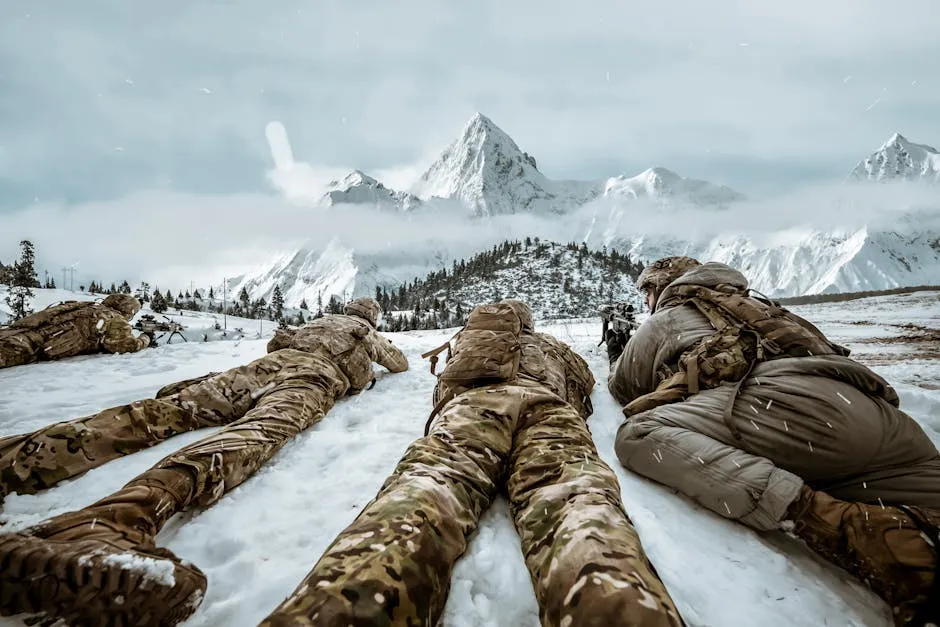
International Response
Global Reactions
The international community reacted quickly to Russia’s invasion of Ukraine. Many countries condemned the aggression, calling it a blatant violation of international law. The United Nations held emergency sessions, urging Russia to withdraw its troops. Sanctions were swiftly imposed on Russia, targeting its economy, financial systems, and key individuals. The U.S. and European Union led these efforts, restricting access to global markets and freezing assets.
In addition to sanctions, military aid poured into Ukraine. Countries like the U.S., the UK, and Canada provided weapons, training, and intelligence support. This assistance aimed to bolster Ukraine’s defenses and push back against Russian advances. Humanitarian aid also saw a surge, with nations rallying to support those displaced by the conflict. As a result, this unified response reflected a strong commitment to uphold international norms and support Ukraine in its struggle for sovereignty.

To understand the military strategies involved, consider reading “Putin’s War on Ukraine: The Unfolding Crisis” by Richard Sakwa. This book provides an in-depth analysis of the strategies and implications of the invasion.
The Role of NATO and the EU
NATO and the EU play crucial roles in the ongoing conflict. NATO’s response included activating defense plans and increasing troop presence in Eastern Europe. This move reassured member states, particularly those bordering Russia, of their security. NATO’s enlargement, which has seen countries like Finland and Sweden express interest in joining, has heightened tensions with Russia. Moscow views this as a significant threat to its sphere of influence.
The EU responded by implementing severe sanctions against Russia and coordinating military support for Ukraine. The bloc also aimed to reduce its energy dependence on Russian resources. This shift is vital for European energy security and aims to weaken Russia’s financial capacity to sustain the war. The actions of NATO and the EU highlight their commitment to collective defense and regional stability, showcasing the broader geopolitical implications of the conflict.

Economic Consequences
The ongoing conflict in Ukraine has severely impacted its economy and infrastructure. Many industries have faced destruction, especially in key regions like Donbas and Mariupol. The war has disrupted supply chains and led to a significant decrease in GDP. The agricultural sector, vital for both Ukraine and global food security, has been especially hard-hit. Farmers struggle to plant and harvest crops amidst the fighting, leading to food shortages.
On a broader scale, Europe now grapples with rising energy prices and inflation due to sanctions on Russia and disruptions in gas supplies. Countries dependent on Russian energy sources face tough choices, prompting them to seek alternative supplies. The war has also led to increased military spending across Europe, which could affect public services and economic growth.
To stay informed about geopolitical developments, consider subscribing to Military History Magazine. It offers insights into historical conflicts that shape our present.

Conclusion
The invasion of Ukraine has reshaped the geopolitical landscape and caused immense suffering. Key points include the historical grievances and security concerns that fueled Russia’s actions. The long-term implications of this conflict affect both Ukraine and Russia, intensifying regional tensions and humanitarian crises.
Diplomatic solutions are essential to foster peace and stability. The international community must prioritize dialogue and negotiation to mitigate the ongoing violence and address the dire humanitarian needs of the affected populations.
FAQs
Please let us know what you think about our content by leaving a comment down below!
Thank you for reading till here 🙂
To understand the complexities of the ongoing conflict, it’s important to consider why the international community discourages Ukraine from military action against Russia.
As you reflect on these events, consider equipping yourself for any situation with a Tactical Military Pen. It’s not just a writing tool; it can also serve as a self-defense weapon if needed!
Lastly, for those who enjoy a good read about resilience in the face of conflict, check out “The Road to Unfreedom: Russia, Europe, America” by Timothy Snyder. This book provides a thought-provoking perspective on the geopolitical tensions surrounding the conflict.
All images from Pexels
The conflict has continued to evolve since the initial invasion, with key developments shaping the landscape up to 2024. Ukraine’s military resilience became evident as they launched successful counteroffensives. Notably, in late 2022, Ukraine began reclaiming territory, including significant areas around Kharkiv and Kherson.
Despite facing considerable losses, Ukrainian forces have adapted, receiving extensive military aid from Western allies. This support has included advanced weaponry and training, enhancing their operational capabilities. As of early 2024, Ukraine has managed to regain approximately 54% of the territory occupied by Russian forces.
However, the war remains contentious, with ongoing battles in the Donbas region and around key cities. Russia has responded with increased missile strikes, leading to severe humanitarian impacts. The situation remains fluid, with both sides preparing for further confrontations as they seek to assert control over disputed territories.

International Response
Global Reactions
The international community reacted quickly to Russia’s invasion of Ukraine. Many countries condemned the aggression, calling it a blatant violation of international law. The United Nations held emergency sessions, urging Russia to withdraw its troops. Sanctions were swiftly imposed on Russia, targeting its economy, financial systems, and key individuals. The U.S. and European Union led these efforts, restricting access to global markets and freezing assets.
In addition to sanctions, military aid poured into Ukraine. Countries like the U.S., the UK, and Canada provided weapons, training, and intelligence support. This assistance aimed to bolster Ukraine’s defenses and push back against Russian advances. Humanitarian aid also saw a surge, with nations rallying to support those displaced by the conflict. As a result, this unified response reflected a strong commitment to uphold international norms and support Ukraine in its struggle for sovereignty.

To understand the military strategies involved, consider reading “Putin’s War on Ukraine: The Unfolding Crisis” by Richard Sakwa. This book provides an in-depth analysis of the strategies and implications of the invasion.
The Role of NATO and the EU
NATO and the EU play crucial roles in the ongoing conflict. NATO’s response included activating defense plans and increasing troop presence in Eastern Europe. This move reassured member states, particularly those bordering Russia, of their security. NATO’s enlargement, which has seen countries like Finland and Sweden express interest in joining, has heightened tensions with Russia. Moscow views this as a significant threat to its sphere of influence.
The EU responded by implementing severe sanctions against Russia and coordinating military support for Ukraine. The bloc also aimed to reduce its energy dependence on Russian resources. This shift is vital for European energy security and aims to weaken Russia’s financial capacity to sustain the war. The actions of NATO and the EU highlight their commitment to collective defense and regional stability, showcasing the broader geopolitical implications of the conflict.

Economic Consequences
The ongoing conflict in Ukraine has severely impacted its economy and infrastructure. Many industries have faced destruction, especially in key regions like Donbas and Mariupol. The war has disrupted supply chains and led to a significant decrease in GDP. The agricultural sector, vital for both Ukraine and global food security, has been especially hard-hit. Farmers struggle to plant and harvest crops amidst the fighting, leading to food shortages.
On a broader scale, Europe now grapples with rising energy prices and inflation due to sanctions on Russia and disruptions in gas supplies. Countries dependent on Russian energy sources face tough choices, prompting them to seek alternative supplies. The war has also led to increased military spending across Europe, which could affect public services and economic growth.
To stay informed about geopolitical developments, consider subscribing to Military History Magazine. It offers insights into historical conflicts that shape our present.

Conclusion
The invasion of Ukraine has reshaped the geopolitical landscape and caused immense suffering. Key points include the historical grievances and security concerns that fueled Russia’s actions. The long-term implications of this conflict affect both Ukraine and Russia, intensifying regional tensions and humanitarian crises.
Diplomatic solutions are essential to foster peace and stability. The international community must prioritize dialogue and negotiation to mitigate the ongoing violence and address the dire humanitarian needs of the affected populations.
FAQs
Please let us know what you think about our content by leaving a comment down below!
Thank you for reading till here 🙂
To understand the complexities of the ongoing conflict, it’s important to consider why the international community discourages Ukraine from military action against Russia.
As you reflect on these events, consider equipping yourself for any situation with a Tactical Military Pen. It’s not just a writing tool; it can also serve as a self-defense weapon if needed!
Lastly, for those who enjoy a good read about resilience in the face of conflict, check out “The Road to Unfreedom: Russia, Europe, America” by Timothy Snyder. This book provides a thought-provoking perspective on the geopolitical tensions surrounding the conflict.
All images from Pexels
On February 24, 2022, Russia launched a full-scale invasion of Ukraine, marking a dramatic escalation in the ongoing conflict. Initial military strategies focused on rapid advances toward key urban centers, including Kyiv. Russian forces aimed to quickly capture the capital and destabilize the Ukrainian government.
In the first weeks, the invasion saw heavy fighting around Kyiv, Chernihiv, and Kharkiv. Russian troops initially made significant gains, but they faced fierce resistance from Ukrainian forces. The Battle of Kyiv became a pivotal point where Ukrainian defenses successfully pushed back Russian advances. The conflict also led to significant territorial changes, with Russia capturing cities like Mariupol and Kherson.
By early April, Russian forces had begun retreating from northern Ukraine, indicating the challenges of maintaining control over captured areas. This phase of the invasion set the stage for a prolonged conflict as both sides adjusted their strategies and prepared for further engagements.
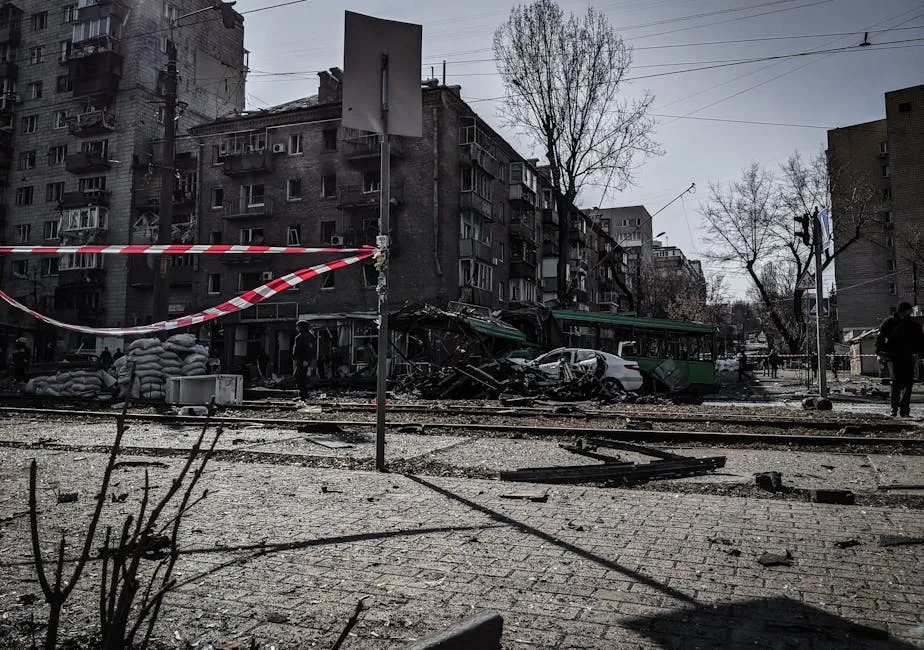
Ongoing Conflict and Counteroffensives (2022-2024)
The conflict has continued to evolve since the initial invasion, with key developments shaping the landscape up to 2024. Ukraine’s military resilience became evident as they launched successful counteroffensives. Notably, in late 2022, Ukraine began reclaiming territory, including significant areas around Kharkiv and Kherson.
Despite facing considerable losses, Ukrainian forces have adapted, receiving extensive military aid from Western allies. This support has included advanced weaponry and training, enhancing their operational capabilities. As of early 2024, Ukraine has managed to regain approximately 54% of the territory occupied by Russian forces.
However, the war remains contentious, with ongoing battles in the Donbas region and around key cities. Russia has responded with increased missile strikes, leading to severe humanitarian impacts. The situation remains fluid, with both sides preparing for further confrontations as they seek to assert control over disputed territories.

International Response
Global Reactions
The international community reacted quickly to Russia’s invasion of Ukraine. Many countries condemned the aggression, calling it a blatant violation of international law. The United Nations held emergency sessions, urging Russia to withdraw its troops. Sanctions were swiftly imposed on Russia, targeting its economy, financial systems, and key individuals. The U.S. and European Union led these efforts, restricting access to global markets and freezing assets.
In addition to sanctions, military aid poured into Ukraine. Countries like the U.S., the UK, and Canada provided weapons, training, and intelligence support. This assistance aimed to bolster Ukraine’s defenses and push back against Russian advances. Humanitarian aid also saw a surge, with nations rallying to support those displaced by the conflict. As a result, this unified response reflected a strong commitment to uphold international norms and support Ukraine in its struggle for sovereignty.

To understand the military strategies involved, consider reading “Putin’s War on Ukraine: The Unfolding Crisis” by Richard Sakwa. This book provides an in-depth analysis of the strategies and implications of the invasion.
The Role of NATO and the EU
NATO and the EU play crucial roles in the ongoing conflict. NATO’s response included activating defense plans and increasing troop presence in Eastern Europe. This move reassured member states, particularly those bordering Russia, of their security. NATO’s enlargement, which has seen countries like Finland and Sweden express interest in joining, has heightened tensions with Russia. Moscow views this as a significant threat to its sphere of influence.
The EU responded by implementing severe sanctions against Russia and coordinating military support for Ukraine. The bloc also aimed to reduce its energy dependence on Russian resources. This shift is vital for European energy security and aims to weaken Russia’s financial capacity to sustain the war. The actions of NATO and the EU highlight their commitment to collective defense and regional stability, showcasing the broader geopolitical implications of the conflict.

Economic Consequences
The ongoing conflict in Ukraine has severely impacted its economy and infrastructure. Many industries have faced destruction, especially in key regions like Donbas and Mariupol. The war has disrupted supply chains and led to a significant decrease in GDP. The agricultural sector, vital for both Ukraine and global food security, has been especially hard-hit. Farmers struggle to plant and harvest crops amidst the fighting, leading to food shortages.
On a broader scale, Europe now grapples with rising energy prices and inflation due to sanctions on Russia and disruptions in gas supplies. Countries dependent on Russian energy sources face tough choices, prompting them to seek alternative supplies. The war has also led to increased military spending across Europe, which could affect public services and economic growth.
To stay informed about geopolitical developments, consider subscribing to Military History Magazine. It offers insights into historical conflicts that shape our present.

Conclusion
The invasion of Ukraine has reshaped the geopolitical landscape and caused immense suffering. Key points include the historical grievances and security concerns that fueled Russia’s actions. The long-term implications of this conflict affect both Ukraine and Russia, intensifying regional tensions and humanitarian crises.
Diplomatic solutions are essential to foster peace and stability. The international community must prioritize dialogue and negotiation to mitigate the ongoing violence and address the dire humanitarian needs of the affected populations.
FAQs
Please let us know what you think about our content by leaving a comment down below!
Thank you for reading till here 🙂
To understand the complexities of the ongoing conflict, it’s important to consider why the international community discourages Ukraine from military action against Russia.
As you reflect on these events, consider equipping yourself for any situation with a Tactical Military Pen. It’s not just a writing tool; it can also serve as a self-defense weapon if needed!
Lastly, for those who enjoy a good read about resilience in the face of conflict, check out “The Road to Unfreedom: Russia, Europe, America” by Timothy Snyder. This book provides a thought-provoking perspective on the geopolitical tensions surrounding the conflict.
All images from Pexels
On February 24, 2022, Russia launched a full-scale invasion of Ukraine, marking a dramatic escalation in the ongoing conflict. Initial military strategies focused on rapid advances toward key urban centers, including Kyiv. Russian forces aimed to quickly capture the capital and destabilize the Ukrainian government.
In the first weeks, the invasion saw heavy fighting around Kyiv, Chernihiv, and Kharkiv. Russian troops initially made significant gains, but they faced fierce resistance from Ukrainian forces. The Battle of Kyiv became a pivotal point where Ukrainian defenses successfully pushed back Russian advances. The conflict also led to significant territorial changes, with Russia capturing cities like Mariupol and Kherson.
By early April, Russian forces had begun retreating from northern Ukraine, indicating the challenges of maintaining control over captured areas. This phase of the invasion set the stage for a prolonged conflict as both sides adjusted their strategies and prepared for further engagements.

Ongoing Conflict and Counteroffensives (2022-2024)
The conflict has continued to evolve since the initial invasion, with key developments shaping the landscape up to 2024. Ukraine’s military resilience became evident as they launched successful counteroffensives. Notably, in late 2022, Ukraine began reclaiming territory, including significant areas around Kharkiv and Kherson.
Despite facing considerable losses, Ukrainian forces have adapted, receiving extensive military aid from Western allies. This support has included advanced weaponry and training, enhancing their operational capabilities. As of early 2024, Ukraine has managed to regain approximately 54% of the territory occupied by Russian forces.
However, the war remains contentious, with ongoing battles in the Donbas region and around key cities. Russia has responded with increased missile strikes, leading to severe humanitarian impacts. The situation remains fluid, with both sides preparing for further confrontations as they seek to assert control over disputed territories.

International Response
Global Reactions
The international community reacted quickly to Russia’s invasion of Ukraine. Many countries condemned the aggression, calling it a blatant violation of international law. The United Nations held emergency sessions, urging Russia to withdraw its troops. Sanctions were swiftly imposed on Russia, targeting its economy, financial systems, and key individuals. The U.S. and European Union led these efforts, restricting access to global markets and freezing assets.
In addition to sanctions, military aid poured into Ukraine. Countries like the U.S., the UK, and Canada provided weapons, training, and intelligence support. This assistance aimed to bolster Ukraine’s defenses and push back against Russian advances. Humanitarian aid also saw a surge, with nations rallying to support those displaced by the conflict. As a result, this unified response reflected a strong commitment to uphold international norms and support Ukraine in its struggle for sovereignty.

To understand the military strategies involved, consider reading “Putin’s War on Ukraine: The Unfolding Crisis” by Richard Sakwa. This book provides an in-depth analysis of the strategies and implications of the invasion.
The Role of NATO and the EU
NATO and the EU play crucial roles in the ongoing conflict. NATO’s response included activating defense plans and increasing troop presence in Eastern Europe. This move reassured member states, particularly those bordering Russia, of their security. NATO’s enlargement, which has seen countries like Finland and Sweden express interest in joining, has heightened tensions with Russia. Moscow views this as a significant threat to its sphere of influence.
The EU responded by implementing severe sanctions against Russia and coordinating military support for Ukraine. The bloc also aimed to reduce its energy dependence on Russian resources. This shift is vital for European energy security and aims to weaken Russia’s financial capacity to sustain the war. The actions of NATO and the EU highlight their commitment to collective defense and regional stability, showcasing the broader geopolitical implications of the conflict.

Economic Consequences
The ongoing conflict in Ukraine has severely impacted its economy and infrastructure. Many industries have faced destruction, especially in key regions like Donbas and Mariupol. The war has disrupted supply chains and led to a significant decrease in GDP. The agricultural sector, vital for both Ukraine and global food security, has been especially hard-hit. Farmers struggle to plant and harvest crops amidst the fighting, leading to food shortages.
On a broader scale, Europe now grapples with rising energy prices and inflation due to sanctions on Russia and disruptions in gas supplies. Countries dependent on Russian energy sources face tough choices, prompting them to seek alternative supplies. The war has also led to increased military spending across Europe, which could affect public services and economic growth.
To stay informed about geopolitical developments, consider subscribing to Military History Magazine. It offers insights into historical conflicts that shape our present.

Conclusion
The invasion of Ukraine has reshaped the geopolitical landscape and caused immense suffering. Key points include the historical grievances and security concerns that fueled Russia’s actions. The long-term implications of this conflict affect both Ukraine and Russia, intensifying regional tensions and humanitarian crises.
Diplomatic solutions are essential to foster peace and stability. The international community must prioritize dialogue and negotiation to mitigate the ongoing violence and address the dire humanitarian needs of the affected populations.
FAQs
Please let us know what you think about our content by leaving a comment down below!
Thank you for reading till here 🙂
To understand the complexities of the ongoing conflict, it’s important to consider why the international community discourages Ukraine from military action against Russia.
As you reflect on these events, consider equipping yourself for any situation with a Tactical Military Pen. It’s not just a writing tool; it can also serve as a self-defense weapon if needed!
Lastly, for those who enjoy a good read about resilience in the face of conflict, check out “The Road to Unfreedom: Russia, Europe, America” by Timothy Snyder. This book provides a thought-provoking perspective on the geopolitical tensions surrounding the conflict.
All images from Pexels
Introduction
Russia’s invasion of Ukraine began on February 24, 2022. This conflict has reshaped international relations significantly. It has triggered a humanitarian crisis, with millions displaced and countless casualties. The military implications are profound, altering the balance of power in Europe and beyond.
To gain a deeper understanding of the conflict’s roots and implications, you might want to check out “The Ukraine Crisis: What It Means for the Future of Europe” by Andrew Korybko. This book offers an insightful analysis of the geopolitical shifts and their potential long-term effects on Europe.
Summary and Overview
The roots of the conflict trace back to 2014, when Russia annexed Crimea. This act sparked tensions, leading to the ongoing war in eastern Ukraine. By late 2021, Russia amassed troops near Ukraine’s borders, signaling an escalation. On February 24, 2022, President Putin announced a full-scale invasion, claiming to protect Russian-speaking populations. Key players include Russia, Ukraine, and NATO allies, all of whom have engaged in diplomatic and military maneuvers. As of early 2024, Russia occupies around 20% of Ukraine, causing global ramifications. The invasion has strained international relations, leading to widespread sanctions against Russia and military support for Ukraine.
If you’re interested in the historical context of Ukraine’s struggle, be sure to grab a copy of “Ukraine: A History” by Orest Subtelny. This book provides a comprehensive overview of Ukraine’s past and how it shapes its present.
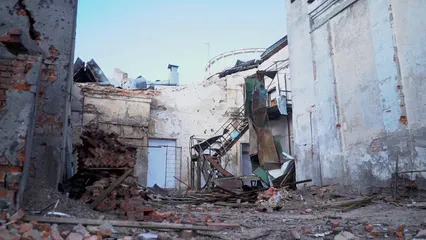
Historical Context
The Legacy of Ukraine and Russia
Ukraine and Russia share deep historical connections, tracing back over a millennium. Both nations have influenced each other’s cultures, languages, and politics. Ukraine was a vital part of the Kievan Rus, a federation of Slavic tribes that laid the foundation for both modern countries. However, Ukraine declared its independence from the Soviet Union in 1991, marking a significant shift. This newfound autonomy allowed Ukraine to pursue a distinct political path, focusing on democracy and European integration. Unfortunately, this independence was met with resistance from Russia, which views Ukraine as a critical part of its historical and cultural identity. The struggle for an independent Ukrainian identity continues to fuel tensions between the two nations.
For those looking to explore the historical narratives further, consider reading “Red Famine: Stalin’s War on Ukraine” by Anne Applebaum. This compelling narrative sheds light on the historical struggles faced by Ukraine under Soviet rule.

Post-Soviet Relations
The collapse of the Soviet Union in 1991 drastically altered the landscape of Eastern Europe. Initially, Ukraine and Russia maintained cordial relations. However, the situation changed following key events like the Budapest Memorandum in 1994, where Ukraine relinquished its nuclear arsenal in exchange for security guarantees. This agreement, however, did not deter Russia’s aggression. NATO’s expansion further strained relations, as Russia perceived it as a threat. The 2014 annexation of Crimea by Russia marked a turning point, signaling a shift towards open hostility and military conflict. As Ukraine sought closer ties with NATO and the West, Russia’s response was aggressive, leading to the ongoing conflict that escalated in 2022. This complex backdrop continues to shape the dynamics of their relationship.
For a broader understanding of how these events fit into a global perspective, consider “The Ukraine Conflict: A Global Perspective” by David R. Marples. This book offers insights into how the conflict affects global politics and security.
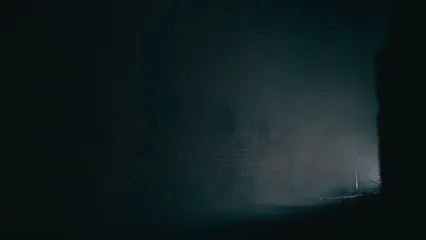
Prelude to Invasion
Build-up to Military Action
In late 2021, Russia began amassing troops along Ukraine’s borders, stirring fears of an imminent invasion. By December 2021, reports indicated that around 190,000 Russian soldiers were positioned near Ukraine. This military build-up was accompanied by escalating rhetoric from the Kremlin, emphasizing concerns about Ukraine’s potential NATO membership. On February 21, 2022, Russia recognized the independence of the self-proclaimed republics of Donetsk and Luhansk, claiming it was necessary to protect Russian-speaking populations. This recognition served as a pretext for military intervention, further complicating an already tense situation. The stage was set for a full-scale invasion, which began just days later, marking a significant escalation in the conflict.
As the situation escalated, it’s crucial to be prepared for emergencies. An Emergency Survival Kit can be a lifesaver in uncertain times, ensuring you have the essentials to handle unexpected situations.
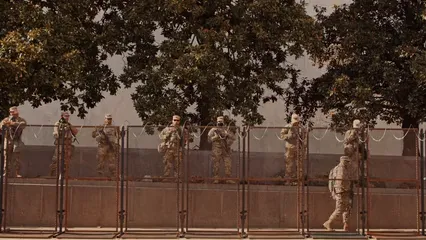
Justifications Presented by Russia
Russia has presented several narratives to justify its invasion of Ukraine. One prominent claim is that NATO’s expansion poses a direct threat to Russian security. The Kremlin argues that NATO’s presence close to its borders is unacceptable. This concern has been used to frame the invasion as a defensive action.
Additionally, Russia has portrayed Ukraine as a hostile nation, alleging that it harbors radical nationalists who endanger Russian-speaking populations. This narrative attempts to legitimize military action as necessary to protect these communities. The Kremlin has pushed the idea that Ukraine’s government is illegitimate and that it must be “demilitarized” and “denazified.”
These narratives have been met with skepticism. Many experts argue that these claims are unfounded and serve more to mask Russia’s imperial ambitions. The insistence on such justifications highlights how the conflict is rooted in a complex blend of historical grievances and geopolitical strategies, rather than genuine security concerns.
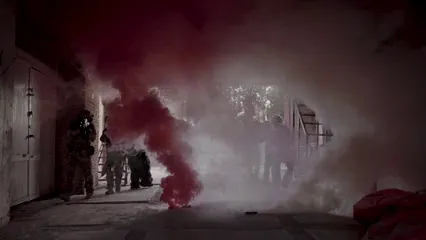
Key Events of the Invasion
Initial Assault (February – April 2022)
On February 24, 2022, Russia launched a full-scale invasion of Ukraine, marking a dramatic escalation in the ongoing conflict. Initial military strategies focused on rapid advances toward key urban centers, including Kyiv. Russian forces aimed to quickly capture the capital and destabilize the Ukrainian government.
In the first weeks, the invasion saw heavy fighting around Kyiv, Chernihiv, and Kharkiv. Russian troops initially made significant gains, but they faced fierce resistance from Ukrainian forces. The Battle of Kyiv became a pivotal point where Ukrainian defenses successfully pushed back Russian advances. The conflict also led to significant territorial changes, with Russia capturing cities like Mariupol and Kherson.
By early April, Russian forces had begun retreating from northern Ukraine, indicating the challenges of maintaining control over captured areas. This phase of the invasion set the stage for a prolonged conflict as both sides adjusted their strategies and prepared for further engagements.

Ongoing Conflict and Counteroffensives (2022-2024)
The conflict has continued to evolve since the initial invasion, with key developments shaping the landscape up to 2024. Ukraine’s military resilience became evident as they launched successful counteroffensives. Notably, in late 2022, Ukraine began reclaiming territory, including significant areas around Kharkiv and Kherson.
Despite facing considerable losses, Ukrainian forces have adapted, receiving extensive military aid from Western allies. This support has included advanced weaponry and training, enhancing their operational capabilities. As of early 2024, Ukraine has managed to regain approximately 54% of the territory occupied by Russian forces.
However, the war remains contentious, with ongoing battles in the Donbas region and around key cities. Russia has responded with increased missile strikes, leading to severe humanitarian impacts. The situation remains fluid, with both sides preparing for further confrontations as they seek to assert control over disputed territories.

International Response
Global Reactions
The international community reacted quickly to Russia’s invasion of Ukraine. Many countries condemned the aggression, calling it a blatant violation of international law. The United Nations held emergency sessions, urging Russia to withdraw its troops. Sanctions were swiftly imposed on Russia, targeting its economy, financial systems, and key individuals. The U.S. and European Union led these efforts, restricting access to global markets and freezing assets.
In addition to sanctions, military aid poured into Ukraine. Countries like the U.S., the UK, and Canada provided weapons, training, and intelligence support. This assistance aimed to bolster Ukraine’s defenses and push back against Russian advances. Humanitarian aid also saw a surge, with nations rallying to support those displaced by the conflict. As a result, this unified response reflected a strong commitment to uphold international norms and support Ukraine in its struggle for sovereignty.

To understand the military strategies involved, consider reading “Putin’s War on Ukraine: The Unfolding Crisis” by Richard Sakwa. This book provides an in-depth analysis of the strategies and implications of the invasion.
The Role of NATO and the EU
NATO and the EU play crucial roles in the ongoing conflict. NATO’s response included activating defense plans and increasing troop presence in Eastern Europe. This move reassured member states, particularly those bordering Russia, of their security. NATO’s enlargement, which has seen countries like Finland and Sweden express interest in joining, has heightened tensions with Russia. Moscow views this as a significant threat to its sphere of influence.
The EU responded by implementing severe sanctions against Russia and coordinating military support for Ukraine. The bloc also aimed to reduce its energy dependence on Russian resources. This shift is vital for European energy security and aims to weaken Russia’s financial capacity to sustain the war. The actions of NATO and the EU highlight their commitment to collective defense and regional stability, showcasing the broader geopolitical implications of the conflict.

Economic Consequences
The ongoing conflict in Ukraine has severely impacted its economy and infrastructure. Many industries have faced destruction, especially in key regions like Donbas and Mariupol. The war has disrupted supply chains and led to a significant decrease in GDP. The agricultural sector, vital for both Ukraine and global food security, has been especially hard-hit. Farmers struggle to plant and harvest crops amidst the fighting, leading to food shortages.
On a broader scale, Europe now grapples with rising energy prices and inflation due to sanctions on Russia and disruptions in gas supplies. Countries dependent on Russian energy sources face tough choices, prompting them to seek alternative supplies. The war has also led to increased military spending across Europe, which could affect public services and economic growth.
To stay informed about geopolitical developments, consider subscribing to Military History Magazine. It offers insights into historical conflicts that shape our present.

Conclusion
The invasion of Ukraine has reshaped the geopolitical landscape and caused immense suffering. Key points include the historical grievances and security concerns that fueled Russia’s actions. The long-term implications of this conflict affect both Ukraine and Russia, intensifying regional tensions and humanitarian crises.
Diplomatic solutions are essential to foster peace and stability. The international community must prioritize dialogue and negotiation to mitigate the ongoing violence and address the dire humanitarian needs of the affected populations.
FAQs
Please let us know what you think about our content by leaving a comment down below!
Thank you for reading till here 🙂
To understand the complexities of the ongoing conflict, it’s important to consider why the international community discourages Ukraine from military action against Russia.
As you reflect on these events, consider equipping yourself for any situation with a Tactical Military Pen. It’s not just a writing tool; it can also serve as a self-defense weapon if needed!
Lastly, for those who enjoy a good read about resilience in the face of conflict, check out “The Road to Unfreedom: Russia, Europe, America” by Timothy Snyder. This book provides a thought-provoking perspective on the geopolitical tensions surrounding the conflict.
All images from Pexels




